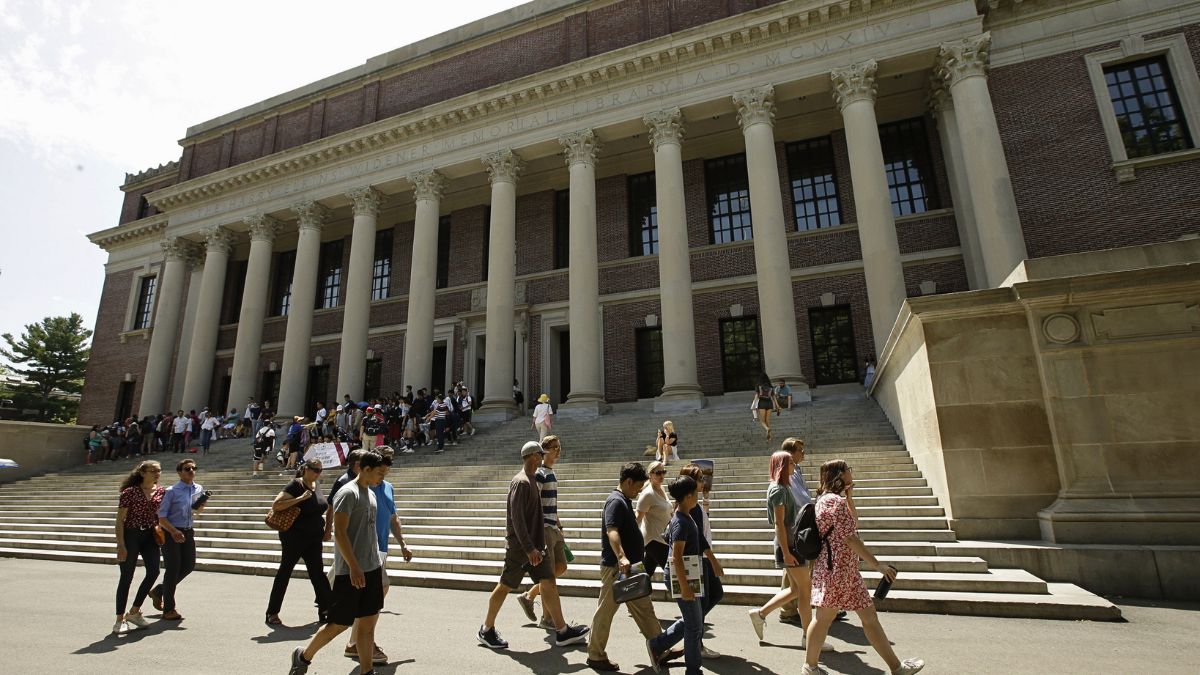For years, the United States was the top destination for ambitious students worldwide. But a growing number are now choosing schools in Asia, Europe, and other regions, driven by visa delays, political uncertainty, and shrinking post-graduation opportunities.
Jess Concepcion, a microbiology student from the Philippines, once dreamed of earning his doctorate in America. That plan changed when visa interviews were paused, political speech was threatened with deportation, and funding for academic research was cut. Instead, he is applying to programs in Switzerland and Singapore. The uncertainty, he says, made him look elsewhere.
Changing Trends
According to the United Nations, 6.9 million people studied outside their home country in 2022. The U.S. still led with 1.1 million international students in 2023–24, but warning signs are growing. Education platforms such as IDP and Keystone Education Group report declining interest in American programs. Many universities are seeing fewer international applications, according to the Institute for International Education.
For decades, Oxford, Cambridge, the Ivy League, and top Australian and Canadian universities dominated global application lists. But institutions in China, Japan, Taiwan, and Singapore have been climbing the rankings, often offering lower tuition fees and targeted recruitment programs.
Asia’s Strategic Push
When U.S. immigration policies became more restrictive, Asian nations accelerated their recruitment. South Korea, for example, has set a goal of attracting 300,000 international students by 2027. Seoul was recently named the top city for international students in the Quacquarelli Symonds World University Rankings.
Scholarships, language programs, and streamlined visa policies have made the country more appealing. Korea University and Yonsei University have even created special admissions and visiting programs for students whose studies in the U.S. are disrupted.
Japan is also expanding its outreach, aiming to host 400,000 foreign students by 2033. Governments see these students not just as contributors to campus diversity, but as future workers to address labor shortages. In South Korea, visa rules now allow more post-graduation work opportunities, and companies like Hyundai actively recruit foreign graduates to help expand overseas.
| Country | 2023 Foreign Students | 2030 Target |
|---|---|---|
| South Korea | 200,000+ | 300,000 |
| Japan | 337,000 | 400,000 |
| Singapore | 65,000+ | N/A |
Benefits and Challenges
For smaller towns in South Korea, foreign students help fill classrooms and local job vacancies as birthrates fall. Tuition caps for domestic students do not apply to international students, providing universities with much-needed revenue.
However, the rush to meet enrollment targets has brought challenges. Looser admission standards and higher work limits have led some students to enroll mainly for job access rather than education. Critics worry this could affect academic quality and sustainability.
Student integration is another hurdle. Some, like Keity Rose Mendes from Mozambique, feel foreign students are not fully included in campus life. While many come for high-quality education, a lack of collaboration and cultural exchange can push them to leave after graduation.
Shifting Global Market
Despite these shifts, the U.S. still holds prestige. Degrees from American universities remain highly respected, particularly in Asia. But concerns over visa revocations, reduced research funding, and a tightening job market are discouraging some applicants.
Countries like Canada, Australia, and Britain have also introduced limits on international student visas or increased fees, signaling a wider global trend of immigration caution. For students, this makes long-term planning harder.
Economic factors are also shaping decisions. The U.S. tech sector, once a major draw, has slowed hiring as automation and artificial intelligence reduce entry-level roles. For Indian data analyst Divyank Rawat, the risk of debt without job security outweighed the benefits of a U.S. degree. He chose to remain in India for now.
Looking Ahead
Global higher education is entering a more competitive era. The dominance of a few traditional destinations is giving way to a multipolar market where students have more choices than ever. Asian universities, with their lower costs, modern facilities, and government backing, are increasingly capturing students who once would have headed to America.
The challenge for the United States will be to address policy uncertainty, protect post-graduation work opportunities, and maintain its appeal in a fast-changing global education landscape.
For official U.S. student visa information, visit the State Department’s visa page.
FAQs
Why are international students choosing Asia over the USA?
Lower costs, easier visas, and stable policies.
Which countries in Asia are leading recruitment?
South Korea, Japan, and Singapore.
How many international students are in the USA now?
About 1.1 million.
What is South Korea’s 2027 student goal?
300,000 international students.
Is the US still the top destination?
Yes, but competition is rising.




